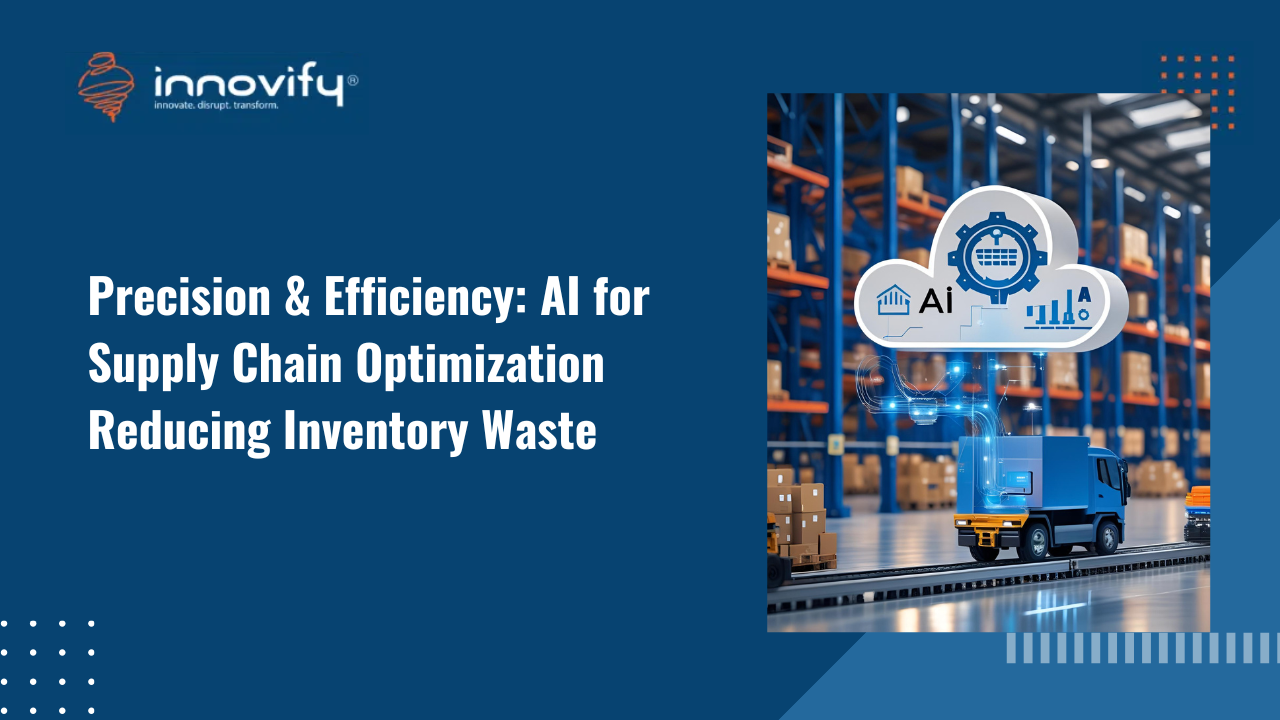Innovation
13 Common Startup Mistakes to Avoid
In today’s rapidly evolving digital landscape, it’s becoming increasingly important for organizations to stay ahead of the curve.
Take, for example, the retail giant Walmart, which has successfully adapted to the digital age by:
- Implementing sophisticated e-commerce platforms
- Incorporating state-of-the-art AI technology
- Leveraging data analytics to enhance their supply chain management
Walmart’s ability to embrace digital transformation has been critical in maintaining its competitive edge and global market dominance. Yet, despite the clear benefits of digital transformation, many organizations face unique challenges in navigating this new frontier.
While delivering high-end enterprise-level digital transformation projects for years, Innovify’s expert team has identified a few challenges that companies face.
In this blog, we’ll delve into 13 digital transformation challenges that organizations commonly encounter and offer practical advice on overcoming them.
Digital Transformation: An Overview
Digital transformation is the process by which organizations integrate and leverage digital technologies, strategies, and innovations to streamline their operations, enhance customer experiences, and boost overall performance. It is not merely about adopting new tools; it involves a fundamental shift in business culture, processes, and mindset. This fundamental shift entails several stages that an organization must go through.
Companies can drive efficiency, foster innovation, and remain competitive in today’s fast-paced, technology-driven landscape by embracing digital transformation.
Though digital transformation varies across industries and organizations, its goal is to:
- Create value
- Optimize resources
- Enable businesses to thrive in an increasingly digital world
What Makes Digital Transformation Difficult?
Digital transformation goes beyond merely adopting new software and technologies. It involves more efficient and automated processes than traditional practices. It entails embracing an entirely innovative approach to core business functions.
Consequently, organizations must consider various factors when undertaking a digital transformation initiative, such as employee reactions, customer relations impact, cost, and alignment with business goals. Digital transformations enable businesses to future-proof operations, withstand competition, and expand into new areas.
However, achieving this is easier said than done. A McKinsey study reveals that 70% of all such programs fail due to employee resistance and insufficient management support. Moreover, only 16% of employees reported that their company’s digital transformation efforts enhance their performance or prove sustainable.
13 Digital Transformation Challenges for Organizations
Embarking on a digital transformation journey can be complex and daunting for organizations of all sizes. As you navigate this ever-changing landscape, you often encounter many challenges.
In this section, we’ll discuss 13 common digital transformation challenges and provide insights to help you effectively address and overcome these hurdles.
1. Inadequate digital strategy
A well-defined digital strategy is crucial for guiding organizations through digital transformation. Organizations can face disjointed initiatives, misaligned objectives, and wasted resources without strategic planning.
To develop a robust digital strategy, businesses should focus on the following:
- Establish clear goals
- Prioritize initiatives
- Regularly assess progress
Ensuring cross-functional collaboration and integrating digital strategy with overall business objectives can help organizations stay on track and drive successful transformation.
2. Resistance to change
Change can be unsettling, and organizations often face resistance when implementing new technologies and processes. This resistance can hinder your digital transformation initiatives and impede progress.
To overcome this challenge, businesses should foster a culture of change by:
- Encouraging open communication
- Providing education and training
- Actively involving employees in the transformation journey
Celebrating early successes and demonstrating the benefits of change can also help build momentum and support for digital initiatives.
3. Integration of legacy systems
Integrating new technology with existing systems can pose significant challenges during digital transformation. However, overcoming these challenges is essential for optimizing processes and driving innovation.
Successful integration strategies include conducting thorough assessments of current systems, identifying potential compatibility issues, and prioritizing integration efforts.
Additionally, leveraging APIs, middleware, and hybrid cloud solutions can help bridge the gap between legacy systems and new technologies, ensuring a smoother transition.
4. Insufficient investment in technology
Investment in technology is a critical factor in successful digital transformation. However, you may not secure adequate funding, which can impede progress and stifle innovation.
To secure necessary investment, businesses should develop a clear value proposition demonstrating digital initiatives’ ROI.
Presenting a well-defined strategy, showcasing early successes, and aligning technology investments with overall business objectives can help organizations garner support and obtain the financial backing needed for their digital transformation journey.
5. Talent gap and skill shortages
A skilled workforce is crucial for driving digital transformation. However, finding and retaining the right talent is more difficult today.
Addressing the talent gap involves:
- Investing in continuous employee development
- Fostering a learning culture
- Embracing reskilling programs
Additionally, businesses can leverage partnerships with academic institutions and external training providers to upskill employees and ensure they possess the expertise needed for successful digital transformation.
Cybersecurity concerns
Digital transformation increases the risk of cyber threats as organizations embrace new technologies and platforms. Implementing effective cybersecurity measures can be challenging, but it’s essential for protecting sensitive information and maintaining customer trust.
To mitigate risks, businesses should adopt a proactive approach to cybersecurity, conduct regular risk assessments, and invest in advanced security tools. Training employees to recognize and respond to potential threats is vital for safeguarding data and ensuring resilience.
Organizational silos
Organizational silos are a phenomenon where different departments or teams operate in isolation. They work with limited communication and collaboration. This disconnected structure can lead to inefficiencies, duplicated efforts, and a lack of alignment with overall business objectives.
Siloed departments can impede your digital transformation initiatives by restricting cross-functional collaboration and information sharing. Breaking down barriers within an organization is challenging but necessary for unified progress.
Encouraging open communication, setting shared goals, and fostering a collaborative culture can help dismantle silos. Additionally, implementing collaborative tools and platforms can facilitate cross-functional cooperation, ensuring the success of digital transformation efforts.
8. Ineffective data management
Data-driven decision-making is essential for successful digital transformation. However, organizations often struggle to collect, analyze, and utilize data effectively.
According to Planview’s international benchmark study, “The State of Strategy Execution,” a mere one-third of the 1,000 business professionals surveyed reported that their organizations have access to accurate and timely data.
To improve data management and analytics capabilities, your organization should:
- Invest in advanced data tools
- Establish clear data governance policies
- Prioritize data quality
Developing a data-driven culture that encourages evidence-based decision-making can further empower organizations. They can leverage data effectively and drive successful digital transformation initiatives.
9. Lack of customer-centric approach
A customer-focused approach is vital for ensuring the success of your digital transformation initiatives.
Shifting from a product-centric to a customer-centric mindset can be challenging but necessary to enhance customer experiences and engagement. To achieve this, you should prioritize customer feedback, invest in customer experience analytics, and align digital strategies with customer needs.
Empathy mapping and journey mapping can also help businesses better understand customer perspectives and tailor their digital initiatives accordingly.
10. Scalability issues
Scaling digital transformation initiatives across an organization presents challenges but is essential for long-term success. A scalable approach requires flexibility, adaptability, and a solid technological foundation.
To ensure scalability, organizations should work on the following:
- Prioritize cloud-based solutions
- Implement modular systems
- Invest in agile methodologies
Fostering a culture that supports innovation and experimentation can help businesses maintain momentum and adapt to changing circumstances. It helps ensure the success of their digital transformation projects.
11. Maintaining momentum and measuring success
Maintaining momentum throughout the digital transformation journey can be challenging, as you must continuously adapt and evolve. Setting and tracking key performance indicators (KPIs) is crucial for measuring success and driving progress.
Establish realistic milestones, regularly review performance, and celebrate successes to ensure ongoing advancement.
Encouraging a culture of continuous improvement and fostering employee engagement can also help sustain momentum and propel digital transformation efforts forward.
12. Balancing Innovation and risk management
Innovation is vital for successful digital transformation, but managing the risks associated with innovative initiatives can be challenging. Striking a balance between fostering innovation and mitigating risks requires a thoughtful approach.
You must adopt a calculated risk-taking mindset, encourage experimentation, and learn from failures. Implementing a robust risk management framework, conducting regular risk assessments, and maintaining open communication about potential risks can help organizations navigate the uncertainties of innovation while supporting digital transformation initiatives.
13. Aligning digital transformation with company culture
Company culture plays a significant role in the success of digital transformation initiatives. Creating a culture that embraces digital transformation can be challenging, but it is essential for driving change.
To promote a culture of innovation, agility, and adaptability, organizations should prioritize transparent communication, empower employees to take ownership of initiatives and provide opportunities for continuous learning.
Leadership commitment to fostering a supportive environment that values experimentation and collaboration will also help align digital transformation efforts with the organization’s culture.
Embracing the Change By Overcoming Digital Transformation Challenges for a Successful Future
Navigating the digital transformation journey is a complex and multifaceted endeavour that presents numerous challenges for organizations of all sizes. By addressing these challenges head-on and implementing proactive strategies, businesses can successfully adapt, innovate, and stay competitive in today’s rapidly evolving digital landscape.
If you’re looking to overcome these digital transformation challenges and need expert guidance, Innovify is here to help. With our experienced team of professionals, we can provide tailored solutions and support to help your organization thrive in the digital era.
Don’t let these challenges hold you back—contact Innovify today and embark on a successful digital transformation journey with confidence.
FAQs
1. How can organizations overcome resistance to change during digital transformation?
To overcome resistance to change, organizations must clearly communicate digital transformation’s benefits to all stakeholders, including employees, customers, and partners. Providing training and support to employees to help them adapt to new technologies can also help overcome resistance.
2. How can organizations address the talent gap in digital transformation?
Organizations can address the talent gap by upskilling current employees, partnering with educational institutions to recruit and train new talent, and collaborating with technology vendors to access external expertise. Creating a culture that encourages continuous learning and innovation can also help attract and retain digital talent.
3. How can organizations ensure the successful integration of new digital technologies with legacy systems?
Successful integration of new digital technologies with legacy systems requires careful planning and a thorough understanding of the existing systems and processes. Organizations need to ensure that new technologies are compatible with existing systems and data, and that they can be seamlessly integrated into the overall business architecture.
4. Why are digital transformations difficult to implement?
Digital transformations are difficult to implement because they often involve significant changes to an organization’s culture, processes, and technology infrastructure. These changes can be disruptive and require the effective implementation of significant resources, expertise, and coordination.
5. How can we overcome the challenges of digital transformation?
We can overcome the challenges of digital transformation by addressing the root causes of these challenges. This can include providing clear leadership and vision, building a culture of innovation and continuous learning, investing in upskilling and reskilling employees, collaborating with external partners and vendors, and using agile methodologies to test and adapt new technologies and processes iteratively.



